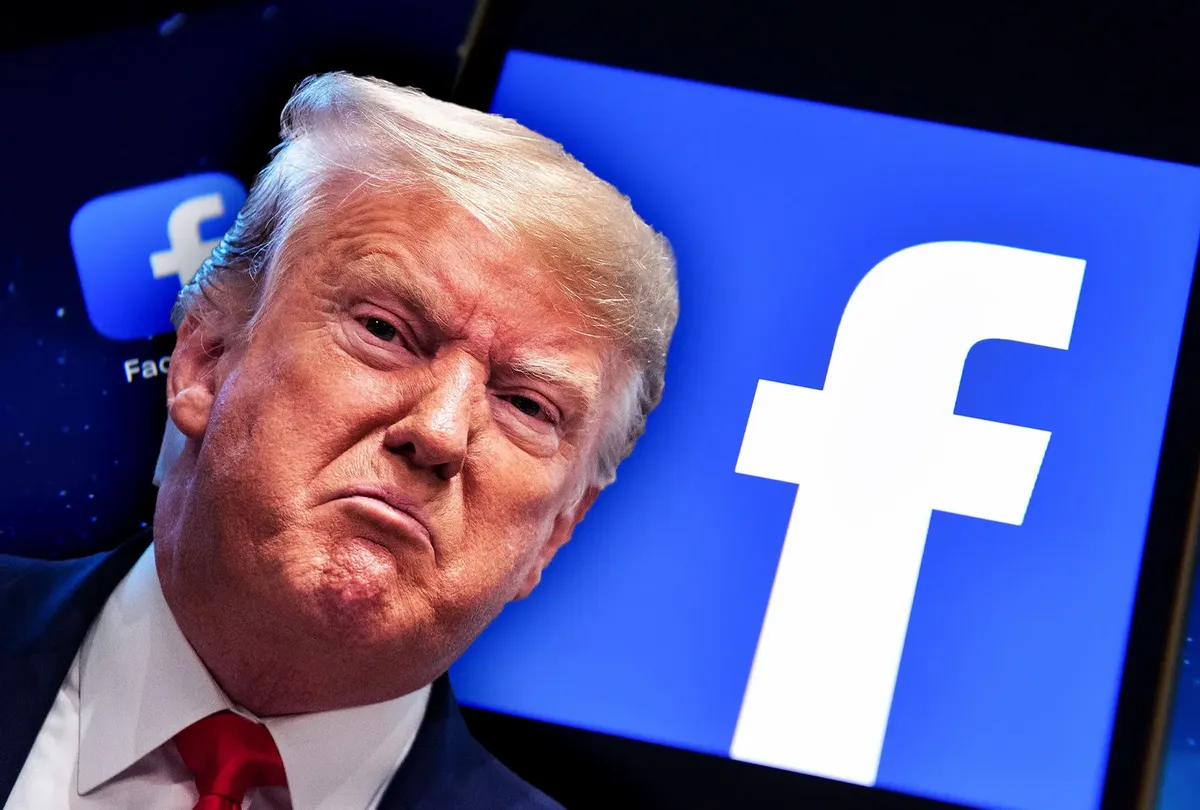Instagram and TikTok have quickly become our digital diaries in an age when social media platforms serve as new diaries; telling our stories via these platforms. However, as with any tale told through narrative devices such as storytelling diaries such as diaries or blogs. There’s the version we tell ourselves as well as reality; both platforms cultivate spaces which often blur reality from artful creation which make determining reality from fiction difficult at best.
Instagram has transformed from an ordinary digital platform into a virtual art gallery. Each post on the platform is carefully curated, often modified, and placed strategically – much like an artist arranging artwork at an exhibit – providing stunning yet misleading representations of daily life.

People control by Algorithmic by Jupiterimages is licensed under CC BY-ND 2.0
Travel Through Rose-tinted Lenses
Instagram feeds with images of sun-kissed beaches and serene mountaintops often reveal untold tales: for instance, getting that picture-perfect sunrise shot might require getting up before dawn, braving cold winds, and waiting hours until that “ideal” lighting came along; candid beach images might conceal bustling crowds just out of frame or the difficulties encountered to locate that “quiet spot”, rendering these struggles irrelevant due to the allure of their destination.
Gastronomic Illusions
Discovering Instagram’s lavish feast for the eyes may lead you to believe every dish can be created quickly, but behind those enticing shots lies an orchestra of chaos and precision – it may not appear simple at first, but that rustic meal could well be the result of hours-long culinary choreography, with repeated failed attempts being met head on! Your salad might appear perfect but its ingredients could take days of searching and hours of deliberate selection just to achieve that exact hue on camera. A YouTube expose exposes these hidden culinary methods; common ingredients can often pass themselves off as gourmet delicacies when presented in these ways; it is crucial that we remain cognizant of this distinction while enjoying this type of visual feasting, remembering there exists an intricate line between culinary art and genuine flavors in everyday life.
Influencer’s Dual Life
Being an Instagram influencer is like being a modern celebrity: every post, story and reel that crosses their feed is scrutinized by millions. Yet behind every post lies hours of hard work: planning content calendars, managing brand negotiations and dealing with engagement rates anxiety all factor in to an influencer’s daily work life – as revealed in Insider revelations; even simple posts require hours of effort as influencers typically take 100 photos before getting one that seems “effortless”. Furthermore, psychological pressure arises due to living up to an online persona that may differ significantly from their real selves – yet another aspect to consider in an influencer’s day job: planning content calendars planning content calendars dealing with brand negotiations as seen from insider revelations: all this extra attention paid by audiences!

Kim Britt’s Instagram account is dedicated to showing the reality behind Instagram is licensed under CC BY-ND 2.0
TikTok’s Dynamic Stage
Engaging and Supressing Realities TikTok, social media’s master of spontaneity, offers a welcome change from static posts. But beyond its catchy tunes and dynamic content lies an intricate web of algorithms rehearsing an orchestrated performance behind-the-scenes.
Decoding the Algorithm
While TikTok’s primary allure is its ‘For You Page’ (FYP) that serves users a cocktail of trending videos, there’s more to its selection than mere whims. Every engagement – a like, share, or even the duration of viewing – is tabulated. The algorithm then uses this data to curate a user-specific reel. But herein lies a question: Does this data-driven approach, intended to customize user experience, end up curating a tunnel-visioned reality? By continually feeding users what they ‘like’, Gillespie (2019) point out the platform risks narrowing their digital horizons, depriving them of diverse content.
The Muted Voices Behind Vibrant Videos
An expose from The Verge revealed an uncomfortable aspect of TikTok that could put its user base off-guard: reports indicated the algorithm may demote content posted by those with certain undesirable traits or backgrounds, challenging not only its core ethos of celebrating spontaneity but posing serious ethical considerations; by silencing certain voices, TikTok risks creating one narrative which limits diversity across its user base and diminishing experience and knowledge sharing opportunities for its members.
Echoes from the Content Creators
Content creators who fall outside the platform’s “preferred” mold may find its biases frustrating, with genuine content often getting hidden or not being given enough visibility; dance routines despite their creativity may receive less views if their creator doesn’t align with its “preferred aesthetic”. Over time this could force creators into conforming to certain standards or cause them to stop creating altogether.
Algorithmic Enigma & Digital Narratives
At the core of Instagram and TikTok lies their algorithimic algorithms – digital curators equipped with codes that decide what we see, when, and tailor our online experiences accordingly. Instagram’s algorithm prioritizes posts with rapid engagement rates, encouraging creators to produce eye-catching, likeable posts. TikTok’s algorithm evaluates user interactions, video data and device type to tailor its ‘For You Page’ accordingly. Tailoring might sound ideal, but algorithms’ bias can inadvertently create silos or echo chambers for users based on what has already been seen or engaged with by others, narrowing users’ feeds further and perpetuating certain viewpoints, aesthetics or beliefs at the expense of others – reinforcing biases while possibly perpetuating them further.
Sarah T. Roberts‘ groundbreaking work “Behind the Screen” sheds light on the complex processes involved with content moderation on digital platforms such as Instagram and TikTok, such as filtering inappropriate posts away. Instead, Sarah highlights that moderators’ unwavering commitment to maintaining platform standards while increasing user engagement often determines which posts receive more visibility than others.
Roberts’ examination of content moderation leads us to reflect upon how platforms like Instagram and TikTok influence our experiences; are we simply exposed to what the algorithm deems “acceptable” or ‘trending”?
These platforms’ algorithms don’t merely filter out content deemed inappropriate; they also prioritize pieces expected to be more ‘likable’ or viral, creating an experience tailored around creating this type of material that fits this predetermined mold; spontaneous moments may become marginalized as more carefully-curated posts take their place on Instagram or TikTok feeds.
Roberts also addresses the psychological strain on content moderators who must navigate through the dark corners of the internet on an ongoing basis, mirroring many creators and users on Instagram and TikTok as they try to cultivate an ideal digital persona with picturesque moments that inadvertently foster feelings of inadequacy and impostor syndrome.
Simply stated, Instagram and TikTok provide platforms for creativity, inspiration, and self-expression; yet, as digital citizens it is our duty to recognize how these platforms function under the surface. “Behind the Screen” offers an important reminder that often what we view on these platforms are carefully-crafted narratives which require discernment when browsing them in order to maintain authenticity amidst all this manufactured spectacle.
The Quest for Authenticity in a Curated Digital Landscape
Instagram and TikTok offer us an unvarnished window into genuine experiences while the digital realm often creates false hopes about real ones. As we scroll through Instagram’s gallery of polished aesthetics that suggest perfection, this “Instagram vs Reality” trend arises to highlight this gap between picture-perfect frames and reality moments depicted therein.
TikTok’s rhythm, though seemingly spontaneous at times, does contain its own orchestrated beats. Creators find themselves constantly fighting an algorithm’s preferences by tweaking content not for pure expression but virality; often going beyond authentic creativity by creating pieces purely to attract views or likes rather than follow their original voice.
As digital storytelling unfolds across both platforms, both are faced with an ongoing struggle: striking an equilibrium between authenticity and curation. With global conversations favoring authenticity, there’s been an emerging movement advocating genuine representation while pushing against digital perfection.
Concluding Thoughts
Instagram and TikTok offer us an endlessly captivating digital tapestry, yet when immersing ourselves in it we must remember who crafted them – as much as these platforms may offer creativity, connection, or entertainment they may also portray an inaccurate reflection of reality. Let us embrace authenticity when engaging, liking, sharing or creating on these platforms – not only the shiny highlights but also all those messy real stories behind each like, share or post.
References:
Before you continue to YouTube. (n.d.). https://www.youtube.com/shorts/qc_WMnJDzHg
Cookist Wow. (2019, March 15). Amazing tricks advertisers use to make food look delicious! [Video]. YouTube. https://www.youtube.com/watch?v=ZMMYxs5t-hE
Gillespie, T. (2019). Custodians of the internet. In Yale University Press eBooks. https://doi.org/10.12987/9780300235029
Hosie, R. (2019, September 16). 8 influencers whose side-by-side photos prove Instagram isn’t real life. Insider. https://www.insider.com/influencers-instagram-vs-reality-side-by-side-photos-real-life-2019-9
Kastrenakes, J. (2020, March 16). TikTok guidelines said not to promote posts by ‘ugly’ and poor users. The Verge. https://www.theverge.com/2020/3/16/21181496/tiktok-ugly-poor-users-no-promotion-guidelines-leak
Roberts, S. T. (2019). Behind the screen : Content moderation in the shadows of social media. Yale University Press.




